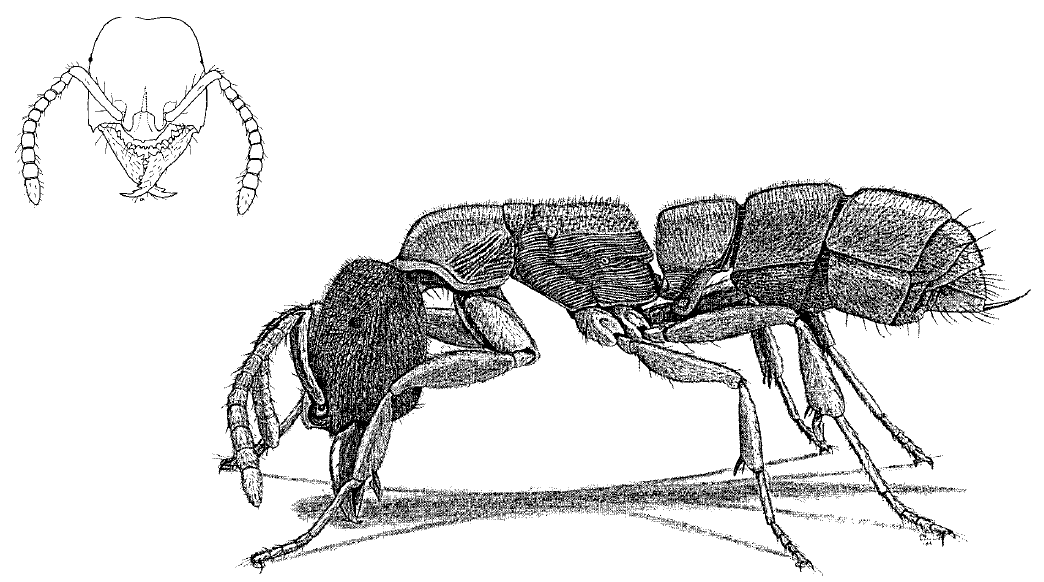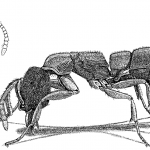 Amblyopone pallipes image provided by
Amblyopone pallipes image provided by A. pallipes is variable, but typically-brown to very dark reddish-brown with mandibles, antennae, and legs yellowish-brown; tenerals (incompletely pigmented adults) common, paler, mottled with yellow-ish-brown; head and alitrunk distinctly sculptured (punctate), surface dull or only very weakly glossy; body with fine, short pubescence. This is the only species found in our area and is easily recognized by the characters given for the genus.
Slow-moving workers forage in leaf litter, under bark of logs, and under rocks, rarely, if ever, being found on the surface (hypogaeic). Females also forage for food during the period of nest founding which is an archaic habit in ants. Centipede prey is paralyzed by sting­ing, then brought back to the nest where it can be stored for some time (Holldobler & Wilson, 1990).
The A. pallipes species, our most primitive ant, is exclusively subterranean (hypogaeic). The bidentate jaws of this ant are very distinctive.
Colonies are small, consisting of 9 to 16 workers and one or more queens (Traniello, 1978); Holldobler & Wilson ( 1990) cite colony size of 1-35. GAC 21 54#21 with 6 dealate females.
Females “call” males not far from the nest by releasing pheromones; after mating, females usually return to the home nest (Holldobler & Wilson, 1990).
Size
Nuptial Flight Dates
Habitat
Food
Behavior
Nesting Information
Verified Locales (counties)
Ashtabula, Franklin, Fulton, Geauga, Greene, Hocking, Lucas, Monroe, Muskingum, Ottawa, Pike, Seneca, Vinton,


